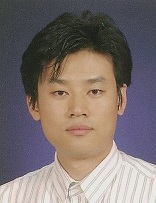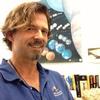

Research Terms
Researchers at the University of Central Florida have developed a liquid crystal (LC)-plasmonic system capable of continuous color tuning over the entire visible color spectrum. Structural color produced from nanostructured plasmonic materials offers many benefits over conventional pigmentation-based color filtering for display technologies, such as increased resolution, efficiency, and scalability of the optical response with structure dimensions. However, once the structures are fabricated, their optical characteristics typically remain static. Though dynamic plasmonic structures exist, most deal with infrared or terahertz frequencies. Those that support the visible colors remain limited to a small range of color tunability due to modest shifts (approximately 10-40 nanometers) in plasmon resonance.
As a solution, the UCF invention combines the advantages of color derived from metallic nanostructures with the millisecond reconfigurability of liquid crystals. The invention offers the ability to support large area, thin-film display elements on rigid and flexible substrates. It can also improve the active tunability of general plasmonic and metamaterial systems.
Technical Details
The UCF invention comprises a liquid crystal (LC)-plasmonic display device with a voltage source coupled to a top electrode and bottom electrode. The top electrode and a homogeneous LC-alignment layer are transparent over the visible spectrum, while the bottom electrode comprises a voltage-tunable-color surface that is optically reflective over the visible spectrum. The innovation enables continuous tuning of plasmonic resonance over 95 nm or more, for liquid crystal birefringence differences equal to or greater than 0.45. In combination with underlying nanostructures of varying periodicity, a full range of visible colors is achievable.
Using a continuous plasmonic surface and high birefringent liquid crystal materials, UCF researchers demonstrated an LC-tunable reflective surface where the color of a nanostructured surface changes as a function of applied voltage. The physical phenomenon occurs at an LC-metal nanostructure interface. To facilitate the interface, the researchers made a cell to contain and align (so as not to scatter light) an LC with the ability to realign the LC with an electric field.
In one example, an LC-plasmonic cell included a visibly transparent substrate with a rubbed polyimide layer for LC alignment on an indium tin oxide (ITO) coated glass, forming a top electrode and a vertically aligned bottom electrode. This included a substrate and a metallic nanostructure for color generation, with the LC in between.
Partnering Opportunity
The research team is seeking partners for licensing and/or research collaboration.
Stage of Development
Prototype available.
Polarization-independent actively tunable colour generation on imprinted plasmonic surfaces. Nature Communications 6, Article number 7337 (2015). https://doi.org/10.1038/ncomms8337
UCF researchers have invented a nanoscale IR detector that overcomes major limitations of today's cooled and uncooled IR detectors. The Optical Frequency-Selective Absorber-Based Infrared Detector operates uncooled and can be tuned to a specific narrow bandwidth within the IR spectrum. The new detector also has a faster response time, zero back reflection, and can be fabricated using simple, lower cost nanoimprint lithography.
Technical DetailsThe new uncooled IR detector consists of a sub-wavelength gold hole/disk array, that when coupled with a ground plane, induces extraordinary transmission through the hole/disk array and zero back reflection. The hole/disk array functions as a "light funnel" in coupling incident radiation into the cavity with approximately 100 percent efficiency over a narrow resonant bandwidth, resulting in frequency-selective perfect (~100 percent) absorption of the incident radiation. The metallic optical frequency-selective gold hole/disk surface comprises two layers that are optically coupled. The top layer is a perforated sub-wavelength-sized hole array, and the bottom layer is a sub-wavelength-sized disk array aligned underneath the hole array. The arrays together function as a resonant antenna to provide the highly efficient notch filter. Like an antenna, the new detector is tunable as a function of the coupling between the hole/disk by changing the hole/disk dimensions, relief depth, or array spacing.
The University of Central Florida invention demonstrates a liquid crystal-plasmonic system that covers the full red-green-blue (RGB) color basis set, only as a function of voltage, for the first time. Nematic liquid crystals are long rod-shaped molecules that have extraordinary properties, most importantly: long-range order and alignment with an electric field. This allows liquid crystals to actively control the color reflected from metallic nanostructures enabling the film formed out of this technology to take any color to match the background to camouflage.
Dynamic, color-changing surfaces have many applications including but not limited to displays, wearables and active camouflage. Plasmonic nanostructures can fill this role with the advantages of ultra-small pixels, high reflectivity, and post-fabrication tuning through control of the surrounding media. The UCF technology greatly advances post-fabrication tuning through a surface morphology induced, polarization-dependent plasmonic resonance and a combination of bulk and surface liquid crystal effects that manifest at different voltages. The resulting LC-plasmonic system provides an unprecedented color range for a single plasmonic nanostructure, eliminating the need for the three spatially static sub-pixels of current displays. The system is compatible with existing LCD technology by integrating it with a commercially available thin-film-transistor (TFT) array. The imprinted surface interfaces readily with computers to display images as well as video.
University of Central Florida researchers have designed a system that can accurately identify the chirality of drugs, proteins, DNA and other molecules at lower detection limits than conventional detection systems. With the ability to generate and use superchiral light, the new technology enables pharmaceutical companies to identify both enantiomers (right- and left-hand versions) of a chiral molecule embedded on a single achiral substrate made from a much smaller sample size than is typically used in current detection methods (picograms versus milligrams).
Pharmacological and toxicological characterization of chiral molecules plays a crucial role in the Food and Drug Administration approval process since some enantiomers can cause toxic or severe side effects. By enabling scientists to study in real-time, protein folding and misfolding, the UCF system may also help in the early detection and treatment of diseases such as Alzheimer's, Parkinson's and diabetes
Technical Details
The invention is a molecular chirality detection scheme for identifying both left- and right-handed versions of chiral molecules. It includes methods for fabricating a single nanostructured substrate faster and more cost-effectively than other systems and illuminating the substrate with circularly polarized light (CPL) to induce chiral light-matter interactions. In one example application, the substrate is an array of hole-disks, each coupled with an asymmetric optical cavity and a back reflector. The substrate is created using low-cost, high-quality, large-area nanoimprinting techniques. A Fourier transform infrared instrument (FTIR) is used to illuminate the unique cavity-coupled achiral plasmonic metasurface with CPL.
The light-matter interaction generates superchiral light, which induces strong chiral near-fields on the upper surface exposed to the target analyte. The capability allows increased interaction with the analyte. Also, the achiral symmetry of the plasmonic substrate suppresses the circular dichroism of the substrate itself, ensuring almost no background noise and allowing the detection of pure chiral signals from the molecule. By controlling excitation conditions, scientists can achieve nearly 100 percent right-polarized or left-polarized chiral near-fields on the same substrate. Since the cavity straightforwardly tunes the chiral plasmonic resonance, a wide range of chiral molecules with various absorption bands may be probed based on the same nanostructure.
Superchiral Light Generation on Degenerate Achiral Surfaces, Physical Review Letters, American Physical Society, 28 March 2018, Vol. 120, Issue 13. DOI: https://doi.org/10.1103/PhysRevLett.120.137601
Tunable Plasmonic Superchiral Light for Ultrasensitive Detection of Chiral Molecules, Science Advances, 23 Feb 2024, Vol. 10, Issue 8. DOI: 10.1126/sciadv.adk2560
Researchers at the University of Central Florida have designed an innovative adaptive infrared (IR) camouflage system that can operate at any wavelength in the technologically relevant, midwave IR (3?5 ?m) and longwave IR (8?12 ?m) bands. The plasmonic nanostructured system design offers a faster, more efficient way to encode information and provides spectral selectivity, which is unavailable in current adaptive IR camouflage technologies. By using multispectral coupling mechanisms and constraining key structural parameters, the new system enables independent tuning of infrared resonances while keeping visible properties invariant. Such capabilities promote advancements in IR tagging, camouflaging and anticounterfeiting.
Technical Details
The cavity-coupled absorber architecture of the UCF system consists of a complementary gold hole/disk array; a tri-layered cavity spacer of silicon dioxide (SiO2), vanadium dioxide (VO2) and an SU-8 polymer; and a reflective back mirror. The system actuates adaptive camouflage by exploiting the semiconductor-to-metal phase transition in the VO2, which modifies the reflection spectra of the system. Thus, depending on the phase of the VO2 layer, the cavity length dynamically changes. In its semiconducting state, VO2 is transparent to IR so that incident light couples to the entire cavity length. However, in the metallic state, VO2 behaves like a mirror and shortens the cavity length by isolating the SiO2 layer from the system.
To demonstrate the system?s multispectral capabilities, researchers encoded an image into a designer-imprinted surface made using a combination of laser writing lithography and nanoimprint lithography. Individual pixels matched the industry-standard size (sub 20 _m). The researchers then mapped the greyscale pixel values of the image in the visible domain to the hole diameters of the absorber tuned to the IR 8-14 _m band. Based on the greyscale values of the visible image, the researchers assigned a false IR "color" to each pixel, enabling them to camouflage information from the visible domain to the IR domain. The dipolar coupling between the array of holes/disks and their interaction with the optical cavity dictated the IR response, whereas diffraction into Fabry-Perot cavity modes dominated the visible regime. Thus, the image was viewable only under the specific wavelength in the IR spectral domain. In the visible domain, the image displayed as a single, uniform block of color.
Partnering Opportunity
The research team is looking for partners to develop the technology further for commercialization.
Stage of Development
Prototype available.
The University of Central Florida invention is a plasmonic biosensor to detect viral infections. Current PCR-based viral detection techniques are slow and tedious, posing technological limitations. Dengue virus type 2 was chosen as a model virus via its nonstructural protein NS1 biomarker. The inventive group has detected the NS1 protein at a concentration of 0.1 – 10 ug/mL in bovine blood using an on-chip microfluidic plasma separator integrated with the plasmonic sensor. This covers the clinical threshold of 0.6 ug/mL of high risk of developing dengue hemorrhagic fever. The conceptual and practical demonstration shows the translation feasibility of these microfluidic optical biosensors for the early detection of a wide range of viral infections, providing a rapid clinical diagnosis of infectious diseases directly from minimally processed biological samples at a point-of-care location.
The University of Central Florida invention is a method and composition to produce superhydrophobic, nanostructured fullerite films from colloidal gels. Fullerenes, the only soluble form of pure carbon, possess unique electrical, chemical, and mechanical properties. By creating a non-wettable film, these materials stay dry for up to three hours when submerged in water, enabling applications in rheology, water purification, electrocatalysis, bacterial disinfection, hydrogen generation and gas storage, and medical devices.
Partnering Opportunity
The research team is seeking partners for licensing and/or research collaboration.
Stage of Development
Prototype available.
Organic Non-Wettable Superhydrophobic Fullerite Films, Advanced Materials, August 2021, Vol. 33, Issue 32, 2102108. https://doi.org/10.1002/adma.202102108.
The University of Central Florida invention is a novel optical antenna array that allows efficient broadband light coupling across the long wave infrared (LWIR) band (or MWIR, SWIR) to the underlying VO2 phase-change material which triggers electronic oscillation. Tracking the change in the oscillator frequency modulation (FM) with respect to incident IR radiation while the VO2 system is electrically biased in the high-temperature coefficient of resistance (TCR) semiconductor (S)-metal (M) transition (SMT) edge, offers significantly higher noise performance compared to the conventional amplitude modulation (AM) based IR detection. Overall, the frequency modulated high-sensitive infrared detection scheme will add an unexplored dimension to room temperature infrared detection and imaging techniques. The proposed frequency modulation (?f) (FM) based IR detection scheme offers noise resistance and higher photon detection sensitivity (?f/PIR).
Partnering Opportunity
The research team is seeking partners for licensing and/or research collaboration.




















































